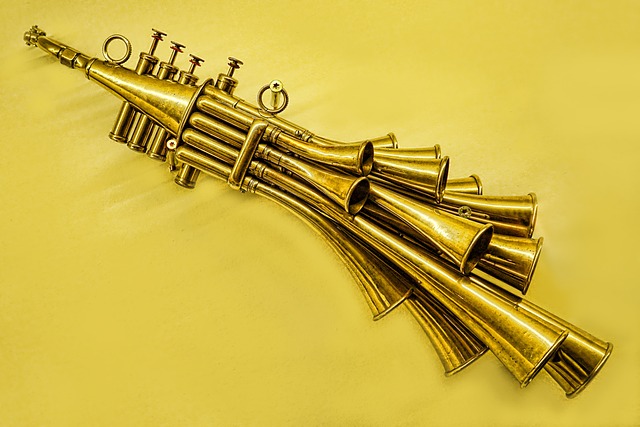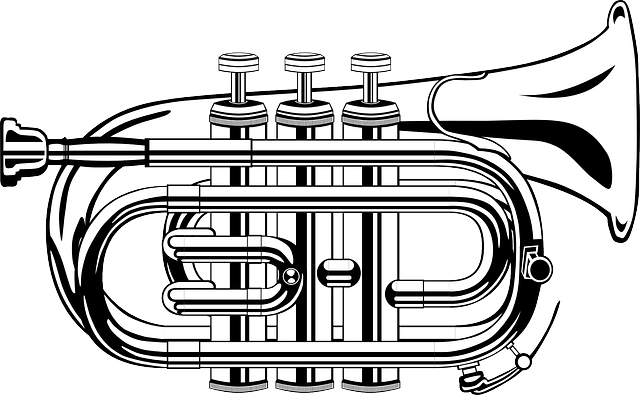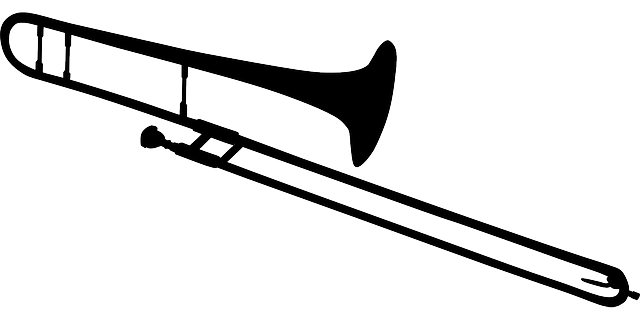Introduction to Brass Instruments
Brass instruments are musical instruments made of metal, typically brass, in which sound is produced by the vibration of air through a cylindrical chamber.
Like all wind instruments, these are classified as aerophones, but brass instruments are set apart because the vibrations are caused by the player’s lips “buzzing” against a cup- or funnel-shaped mouthpiece. They are also called labrosones, which means lip-vibrated instruments.
Brass instruments are defined by the way the sound is made and not by whether the instrument is made from actual brass.
Therefore, some brass instruments are made of wood and some woodwind instruments are made of brass. Many early lip-vibrated instruments were traditionally made from wood, bone or animal horn, and many modern versions of brass instruments are made from metal alloy.
Some brass instruments only produce one fundamental note that follows a harmonic scale when overblown, like a bugle, but most brass instruments have valves or slides that alter the length of the air chamber, producing different notes. The strength and tension of the player’s lips, called embouchure, and the speed of air flow also affect different notes and tone. Historically, these lip-vibrated instruments, especially early trumpets, were used to communicate a message rather than produce music.

History of Brass Instruments
The earliest brass instruments were straight or curved open horns made from wood, bone and animal horns. These usually consisted of a mouthpiece affixed to a cylindrical tube that produced only one note. They existed in the earliest cultures of Egypt, India, New Guinea, Brazil and Australia. The shofar, an ancient Hebrew instrument made from a ram’s horn, is an example of one of the very first trumpets. It was first documented in 10th century BCE and is still used in ceremonies today. Similar is the didgeridoo, a lip-vibrated instrument that is thousands of years old and still popular among Aborigines in Austraila.
A wider range of materials was used to fashion lip-vibrated instruments around 300 to 500 CE, including clay and precious metals. Many civilizations developed a long, straight trumpet-like instrument made from bronze or brass around the same time, making it difficult to pinpoint the origin of this early brass instrument. Some examples of brass instruments are the ekkalam in India, the salpinx in Egypt and the dungchen in Tibet.
Brass instruments began resembling modern instruments used today during the Middle Ages, around the 11th century. The buisine, a medieval fanfare trumpet, emerged in southern Italy and became the direct predecessor to all modern brass wind instruments. Variations on the brass trumpet appeared during the European Renaissance period, including the first slide trumpet developed in 1450 CE—the predecessor to the trombone.
The 17th century saw major innovation in design and variety of brass instruments as they began to be seen as capable of musical expression and melody. Valves were introduced and the trombone became widely used in ensembles. Horn players began to be included in orchestras in the 1700s and brass sections became especially popular during the European Baroque period. Most of the brass instruments we see today were developed during the 19th century as improvements on their more simplistic predecessors. However, some improvements on classical instruments, like the double trigger bass trombone, have been introduced in the 20th century.

Types of Brass Instruments
The most prominent type of brass instrument is defined by the use of valves to change pitch. Most instruments have a set of three or four valves (although some have as many as seven) that are operated by the player’s fingers. Movement of the valves introduces additional tubing, therefore changing the overall length of the air chamber. Most valves are pistons that are operated by a button-like depressor but there are also rotary valves that operate through a small lever that spins a cylinder to align the chambers in the valve. Rotary valves are common on the French horn and tuba.
Valved instruments:
1. Baritone horn
2. Cornet
3. Euphonium
4. Flugelhorn
5. French horn
6. Mellophone
7. Sousaphone
8. Tenor horn
9. Trumpet
10. Tuba
Slide brass instruments use a slide to change the length of tubing in the air chamber. These are less common and are typically only found on the trombone.
Natural brass instruments have no valves or slides and play only one fundamental note. When the speed of airflow into the instrument is changed, the instrument produces a harmonic series of that one note. Many versions of valved instruments were originally natural instruments but a few are still used today, typically for ceremonial performances.
Natural instruments:
- Bugle
- Didgeridoo
- Ekkalam
- Kombu
- Lur
- Shofar
- Vuvuzela
Non-traditional brass instruments are those that fall outside of the above categories but are still considered lip-vibrated instruments. Below are some examples, although many of these have fallen out of use.
- Alphorn
- Conch
- Cornett
- Keyed trumpet
- Ophicleide
- Serpent
- Vladimirskiy rozhok

Playing techniques
All brass instruments are played using the same technique of blowing a stream of air through vibrating lips into a mouthpiece but there are some additional techniques employed by many brass musicians. One of the most common techniques is circular breathing, which is when the player produces a nonstop stream of air into the instrument. This is achieved by breathing in through the nose and maintaining a reservoir of air in the mouth, allowing the player to push air out continuously.
Using mutes are another popular technique, often used in jazz music. A mute is a device fitted to the bell of the instrument that alters the sound that’s produced by reducing the volume and tone. A brass instrument mute either squeezes the inside of the bell or is clipped to the outside of the bell. Typically made from aluminum, brass or copper, mutes come in many different shapes and sizes to create a variety of different effects.
A trill is a musical ornament common with many different instruments. The effect is produced by rapidly alternating between two adjacent notes. Trills may be produced by slurring between the two notes through the use of embouchure, called a lip trill, or by quickly changing finger positions between the two notes. The latter is particularly difficult with most instruments except brass piston instruments, in which it can be easier to change positions quickly.

Mechanics
While most modern brass instruments use valves to change pitch, it’s necessary to keep the instrument in tune to achieve the desired notes while playing. Many brass instruments, like the trumpet or tuba, feature short tuning slides that allow the player to adjust the length of the air chamber. Tuning slides are typically assigned to certain valve combinations and when pushed out or in, lower the pitch of the valves. Brass instruments are naturally sharp, especially when using a mute, and the tuning slides allow the player to compensate for the deficiencies present in the valves.
Some valved instruments have triggers or throws allow the player to quickly adjust the main tuning slide. These were developed because some instruments are naturally sharp in a specific register, making a quick adjustment of the tuning slide necessary while playing. The trigger is depressed while in the register and released when changing back, allowing the tuning slide to go back to its original position. A throw is a simpler mechanism, a metal hook or grip on the tuning slide that a player can rest their finger on and slide into and out of place while playing.
Notable musicians
The world of brass instruments has been home to a great number of accomplished musicians, both in history and current day. Below are some of the most talented and well-known modern day brass musicians from around the world.
- Ambrose Akinmusire
- Arturo Sandoval
- Avishai Cohen
- Claudio Roditi
- John Swana
- Kishore Sodha
- Raul de Souza
- Ryan Kisor
- Terence Blanchard
- Tom Harrell
- Troy Andrews
- Wynton Marsalis
